sunny computers
yesterday we (+bkn) looked at some sun sparc machines for the first time!
- SPARCstation IPC (sun4c lunchbox), serial numbers 134F2609 + 131F2926
- SPARCstation 5 (sun4m pizzabox), serial numbers 507FA05C + 538F1242
- Ultra 5 (ultrasparc pizzabox), serial number FW84450552
- Sun GDM-17E20 (monitor), Sun Type 4 (keyboard)
i got these and a bunch of other non-x86 hardware from peter metz (classiccmp.de) in 2015.
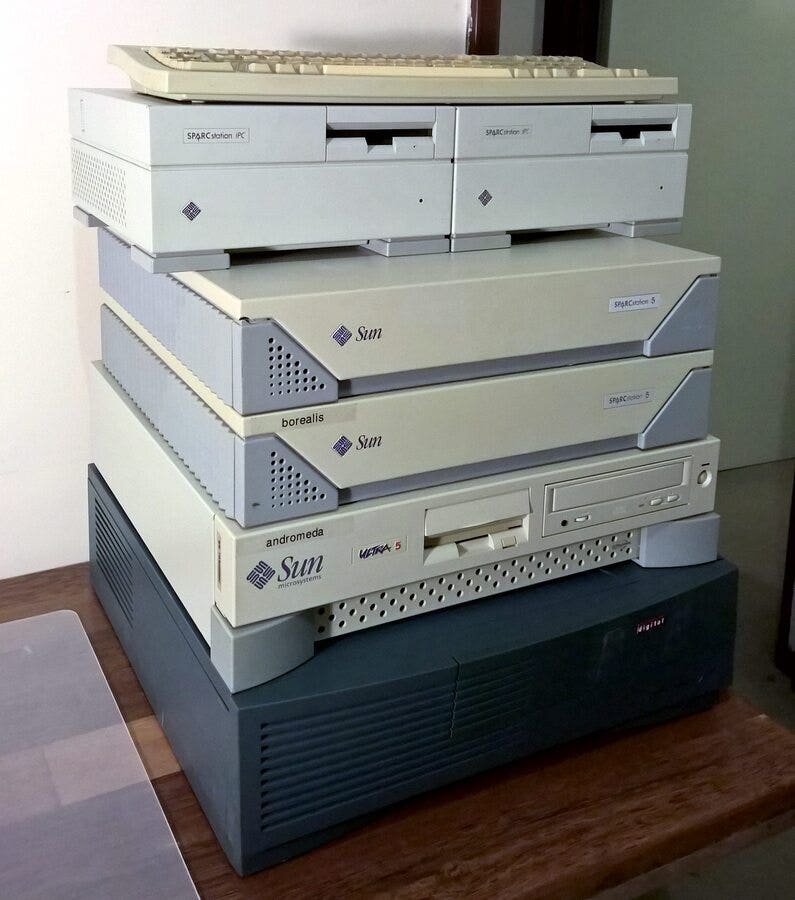
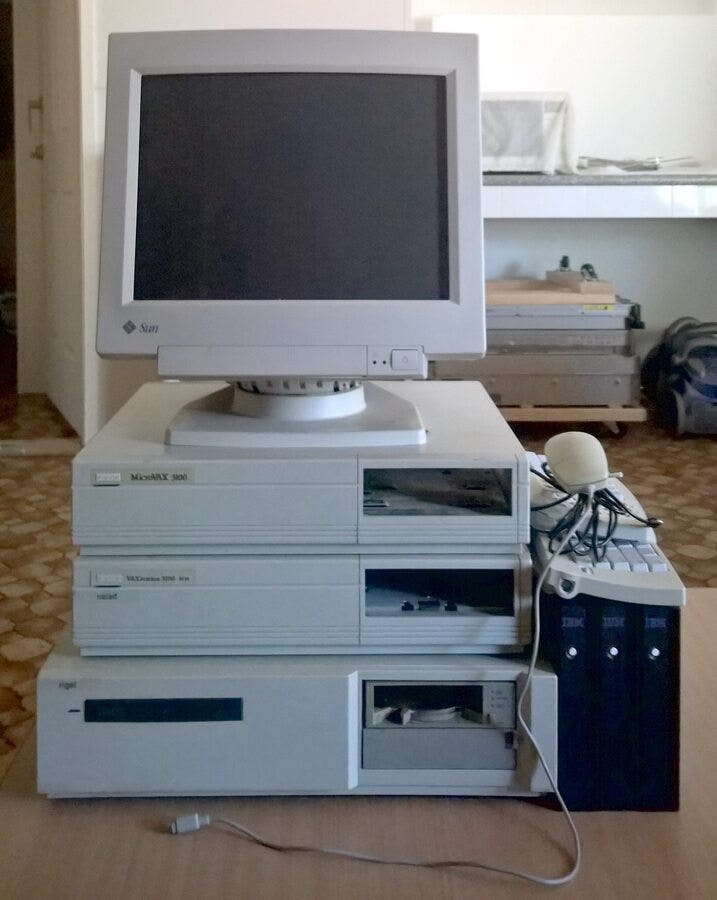
before we started, we migrated our support machine from really old spinning rust to a cheap ssd. i had forgotten how unbearably slow windows is without one.
Sun GDM-17E20 (monitor)
we needed the sun monitor for most of today’s machines, because they use the db13w3 connector, not vga like most of our monitors. opening it while the caps were still drained to check for leaky caps, it was hard to see through the metal inner cage, but it looked ok.
unfortunately, while we were reattaching the base, one of the springs came off the mounting disc that the base clipped into, allowing the disc to move freely even though it shouldn’t.
attempts to fix this through the existing opening were unsuccessful, and we ended up having to take the monitor a lot further apart.
with the base removed, we were able to reattach the spring to the disc, and move the disc back under the tracks it had fallen out of. to keep the disc under the tracks when removing the base, we need to keep the base at the angle where the spring rests naturally.
we noticed that the monitor was designed such that a bundle of wires ran close to a sharp metal edge, so to leave that better than we found it, we wrapped the edge in electrical tape. on the other hand, it was unclear how to safely remove and insert the screw covers in the top case, so i ended up breaking both of them to some extent, one of which required a small amount of double-sided tape to stay attached.
SPARCstation IPC (sun4c lunchbox)
the SPARCstation IPC is the oldest design of the three, and it’s like a lunchbox version of the SPARCstation 1+ pizzabox. it’s a sun4c machine, a direct descendant of the sun4 platform in which sun debuted sparc. the connectors are unfamiliar coming from the pc world, with two db13w3 ports for monitors and an 8-pin mini-din for the keyboard and mouse. notably there’s an aui port for networking, which is the 10-megabit-era counterpart to sfp. the idea behind things like aui and sfp is that you can choose your physical layer medium by providing your own transceiver, which converts the generic port to twisted pair (rj45) or coaxial or fibre optic.
internally they use sbus to connect to expansion cards, not pci or isa like their pc contemporaries. sparcstations also rely on battery-backed nvram to configure the firmware when booting, but annoyingly, many of them use a part for this where the battery and memory are integrated into an enclosed package, expecting you to replace the whole when the battery dies, but more on that in another chost.
IPC serial number 134F2609
the first IPC appeared to be in pretty bad shape, with part of its power supply enclosure being suspiciously rusty.
the cause became more apparent when we disassembled the power supply, revealing that several electrolytic caps were actively leaking, and the traces on the pcb were degraded.
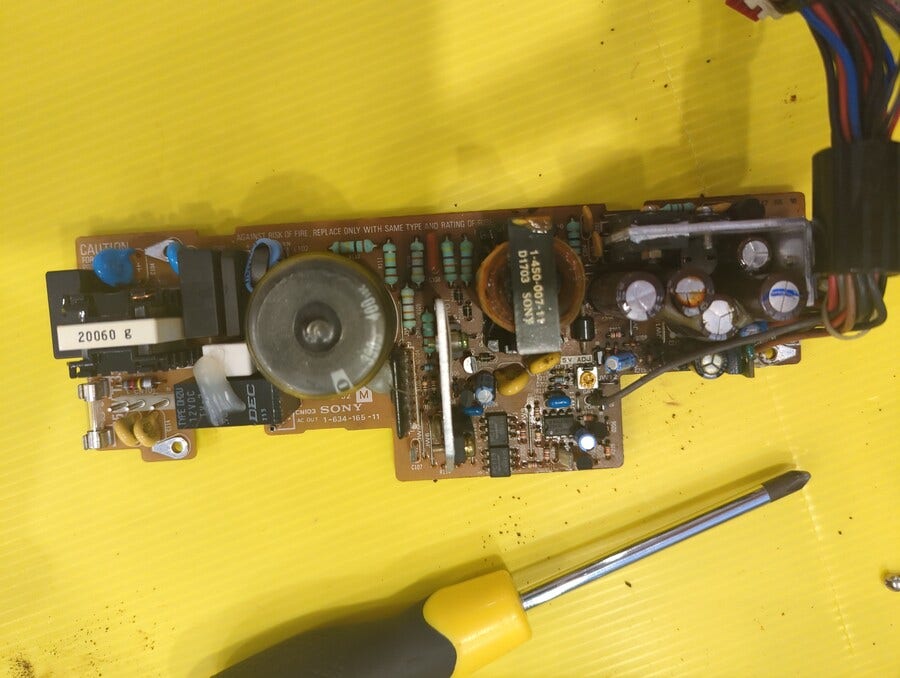
nathaniel taught me how to use a desoldering gun, and together we removed the leaky caps, then (somewhat) cleaned and neutralised the board with ipa. heating the solder near the leaks created an unpleasant fishy smell. eventually we will decide whether to print a new pcb and repair the power supply in its original design, or replace it with something completely new like a picopsu.
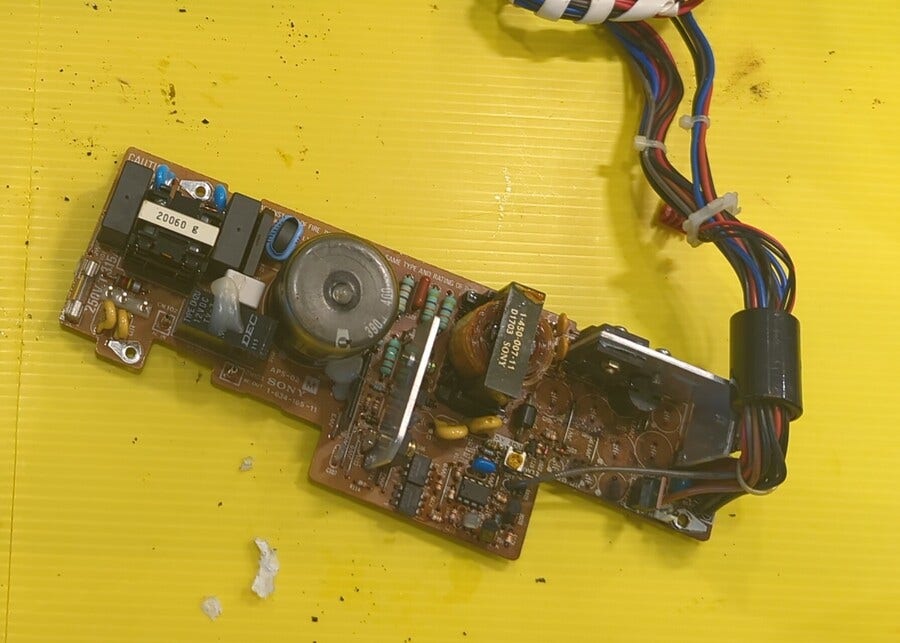
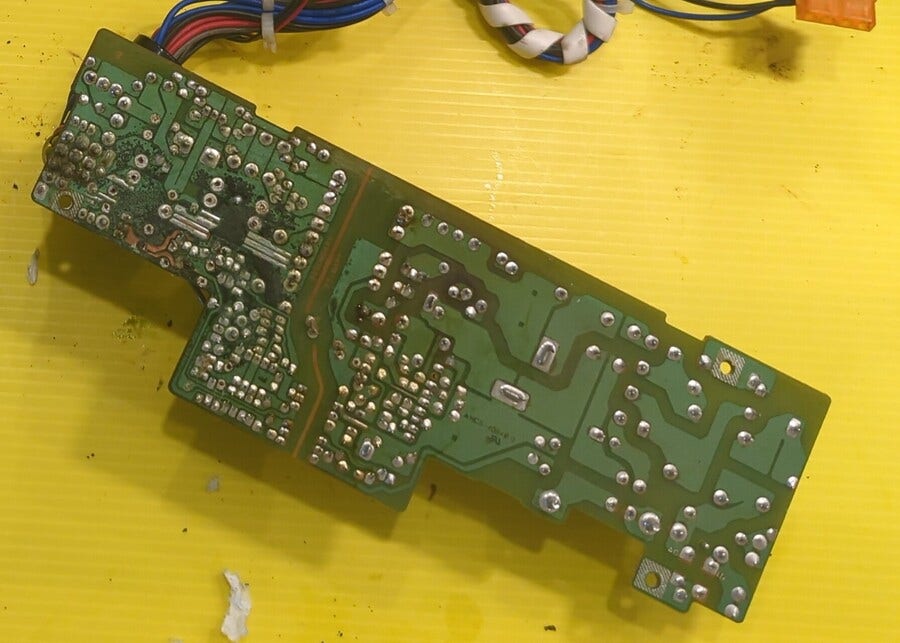
IPC serial number 131F2926
the second IPC has what looks like a UWA asset tag carved into it.
unfortunately, it also showed signs of leaking electolytic caps, so we decided not to proceed until we’re able to repair it. and while we reassembled it, the button that releases the right side of the case snapped off the underlying metal leaf. abs is incredibly fragile!
we have not yet looked into dumping the hard drives in either IPC.
SPARCstation 5 (sun4m pizzabox)
the SPARCstation 5 is a pizzabox that runs on the sun4m platform, which is the successor to sun4c and so named because it replaces sbus with the multiprocessing-capable mbus. that said, the SPARCstation 5 itself is still a uniprocessor system with sbus.
the removable storage is interesting, with a cd drive whose tray occupies its entire face, like a laptop drive but thicker, and a floppy drive that’s been modified for software eject, like many macintosh computers.
like the SPARCstation IPC, the top of the case in the SPARCstation 5 opens as if there’s a hinge along the front edge, but unlike the IPC, the top case achieves this with three long fragile tabs. i learned this the hard way, breaking two of the tabs in one of the machines.
in the SPARCstation 5, the top case also wraps the front face of the machine, so with only one tab holding the front of the case closed, we must now be especially careful not to lift the front of the machine by the face. we must hold the bottom of the machine, starting from the back edge if the bottom is unreachable due to the surface underneath.
SS5 serial number 507FA05C
the first SS5 passed a visual inspection internally, and was labelled “borealis”. its cpu came in a beautiful purple ceramic package and hard-drive-platter-shaped heat sink.
unfortunately, when we tried booting the machine, a tantalum cap near the power supply edge of the mainboard failed, sending a couple of sparks flying and leaving a smell of magic smoke behind. we’ll need to replace the cap, and it would probably be a good idea to test the power supply separately before attempting to boot again.
SS5 serial number 538F1242
the second SS5 passed a visual inspection internally, and has a different expansion card installed, allowing the use of a second monitor (if we had one).
the machine starts! but we weren’t able to boot anything installed on it, and when we booted a solaris 9 install cd, we noticed we were only able to read from one of its two hard drives. in both cases, it might have been due to our unfamiliarity with openboot and solaris.
we were also able to boot a debian 3 install cd, and there we were able to mount ufs on both disks (one for /, one for /usr/). the newest mtime in the root was march 2004, and we saw a reference to “news.uwa.edu.au” there too.
we tried to dump the disks in situ, but debian 3 didn’t appear to have a driver for the nic. we also found that we lacked the necessary hardware to connect the disks to another machine, because the disks in both machines use sca (80-pin), whereas our pci scsi hba cards only had 50-pin (0.1″ header) and 68-pin (internal D shell) internal connectors, and we only had 68-pin (idc with internal D shell) cables.
the cable connecting the backplane to the mainboard was interesting too. it has a 50-pin (0.1″ header) connector for the cd drive, as well as a 50-pin connector i’m unable to find any references to, but has similar density to 68-pin (internal D shell).
Ultra 5 (ultrasparc pizzabox)
the Sun Ultra 5 is a much newer pizzabox built around the 64-bit ultrasparc architecture, unlike the 32-bit architecture of the sparcstations. early models in the ultra series used sbus, but later ones switched to pci, and some of those later models even replaced scsi with ide. the Ultra 5 was the first such model.
Ultra 5 serial number FW84450552
our Ultra 5 passed a visual inspection internally, and was labelled “andromeda”. the machine started, but complained about corrupt nvram, so the battery is probably dead. that said, we were able to continue booting the installed solaris 2.6 (sunos 5.6) with “ok boot disk”.
pushing the front power button broke out of X and solaris, returning us to openboot.
we dumped the drive with the guts of a usb to ide enclosure connected to a linux machine, and were able to mount ufs on that machine too. we had a nicer looking usb to ide cable, but only found it afterwards.